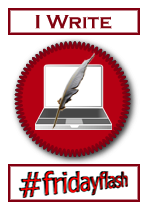The Juice drove down the street, keeping the car under thirty, fast enough to draw no attention, yet slow enough to scope out the neighborhood. He shook his head at the white brick with the two-car garage. They had a security sign out front. The red brick showed potential at first, but then he saw the Beware Of Dog sign posted on the fence. Whether the owners actually had a dog or not, he didn't know; but with all the other houses available, he sure wasn't going to chance it. As he rolled by the sandstone with the light green trim, he let off the gas. This was the one. No signs of alarms or dogs. One mini-van out front with a car seat he could see through the windows. And best of all, the bay door of the garage was still up.
He pulled past the house and parked the van at the curb. A glance around the neighborhood told him everything was cool. No other cars in the drives. No nosy ladies with silver hair peeking through the shades. He reached down beside the seat, grabbed the Colt Python, and rolled the cylinder, making sure every chamber had a round. He didn't intend to use it, and odds were he wouldn't, but one never knew what to expect going in.
He shut the engine down, but left the keys in the ignition. If things went down wrong and he had to run, there was no use in wasting time searching his pockets and then looking for the right key.
He took one last glance around the neighborhood. Just a quick in-and-out, he reminded himself. Grab the most expensive stuff and then move on...

A recent spike in local burglaries has given me pause to think. Whether it's a result of the bad economy, as the media has reported, or just the bad guys changing their targets of opportunity, I'm not sure. What I am beginning to understand, though, is that the old maxim holds true: an ounce of prevention is worth a pound of cure.
In reading the news articles, it appears that most burglars are looking for easy targets, places that raise their comfort level of getting in and out without interference. As such, it becomes important for a homeowner to set an appearance that might cause a criminal to think twice. Here are a few suggestions:
- Don't leave your garage doors open.
- If you park your car outside of your garage, use a key chain transmitter (or even a touch pad) and don't leave a remote in the car. It's better to have a broken car window, or a jimmied door, than a burglar with a loaded gun in your house.
- If you have a home security system, be sure to post signs in the yard.
- If you have a small dog, buy a large dog bowl to set out by the back door. Large bowls leave the impression of large dogs.
- Whether you have a dog or not, post a Beware of Dog sign on the fence.
- When you leave the house, alternate which inside light you leave on. If a burglar sees too much consistency, he'll feel more secure that nobody is home.
- When you leave for extended weekends or vacations, tell your neighbors so they can keep watch for you.
- Also ask your neighbors to pick up your newspapers (and mail, if you haven't stopped it at the post office) and maybe to occasionally park a car in your driveway.
- Get exterior lights with sensors that will trigger with any movement.
- If you use an answering machine, leave a message that says, "I can't come to the phone right now" instead of announcing that you're not home.
Of course, this list is not intended to be exhaustive. And I don't suggest that every idea is worthy for every situation. Rather, it's purpose is to cause you and me to start thinking about how we can make our house as unattractive (to criminals) and unaccessible as possible. Feel free to post any additional suggestions you have in the comments.
Of course, as demonstrated above, the writer in me likes to know these things so I can create thugs who look for the weaknesses so they can take advantage and commit the crimes. ;)







